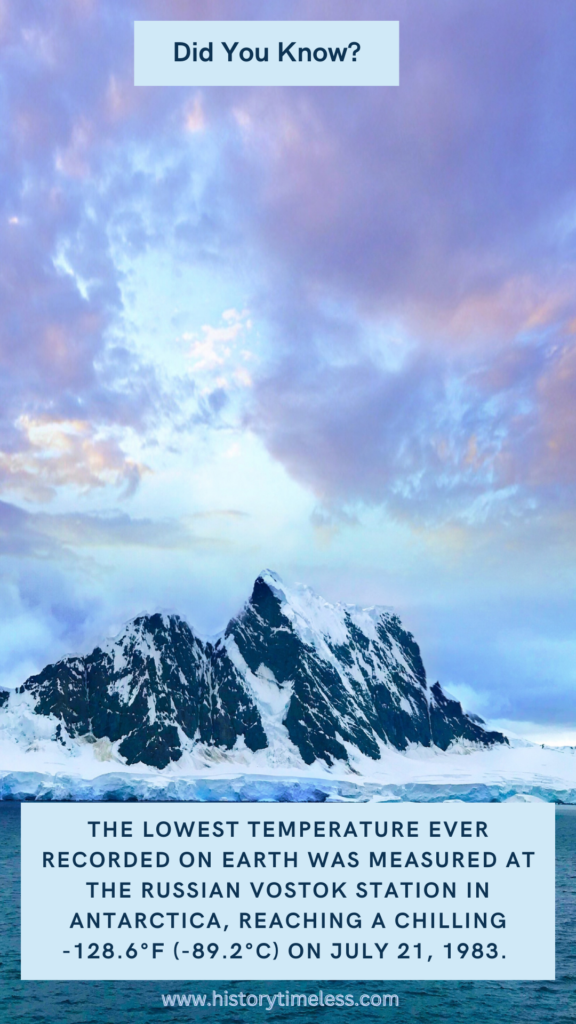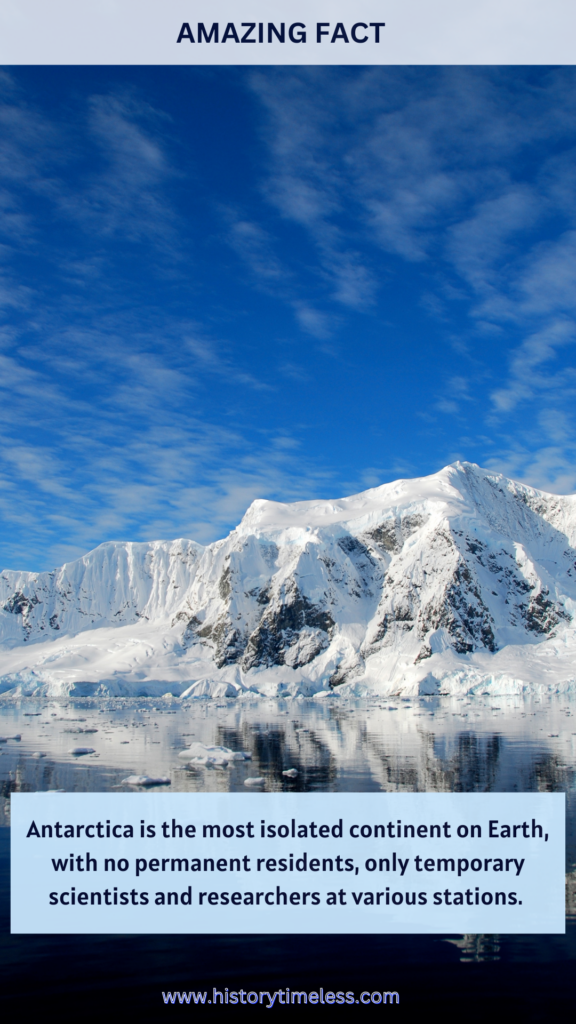Antarctica, the frozen continent, is a land of mystery and wonder. With its unique landscapes, extreme climate, and fascinating wildlife, Antarctica is a place that continues to capture the imagination of people around the world. From its towering ice sheets to its eerie, frozen landscapes, Antarctica is a realm of breathtaking beauty and awe-inspiring discovery.
1. Unexplored Regions
Despite the many scientific research stations and expeditions to Antarctica, there are still several unexplored regions on the continent, including the interior of the ice sheet and the subglacial landscape.
The unexplored regions provide opportunities for future scientific research and discovery and will help to shed new light on the unique and fascinating world of Antarctica.
2. Ice Core Drilling
Scientists have drilled several ice cores in Antarctica, including the Vostok ice core, which is over 2 miles (3.2 kilometers) long and provides a unique record of the Earth’s climate history over the past 800,000 years.
The ice cores have helped scientists to understand the Earth’s climate system, including the role of greenhouse gases and the impact of human activities on the climate.
3. Fossil Fuels
Antarctica is thought to have significant reserves of fossil fuels, including coal, oil, and natural gas. However, the exploitation of these resources is strictly prohibited under the Antarctic Treaty,
Which aims to protect the continent’s unique and fragile environment. The treaty ensures that Antarctica remains a natural reserve, devoted to peace and science.
4. Coldest Temperature Ever Recorded
The lowest temperature ever recorded on Earth was measured at the Russian Vostok Station in Antarctica, reaching a chilling -128.6°F (-89.2°C) on July 21, 1983.

This extreme cold is due to Antarctica’s location at the South Pole, where the sun does not rise above the horizon for six months during the winter solstice. The extreme cold makes Antarctica one of the most inhospitable places on Earth.
5. Subglacial Lakes
There are several subglacial lakes in Antarctica, including Lake Vostok, which is the largest and oldest freshwater lake on Earth. The lake is about 14,000 feet (4,300 meters) below the surface of the ice sheet, and is thought to have been isolated for millions of years.
The subglacial lakes provide valuable insights into the Earth’s geological history and the evolution of life on our planet.
6. Penguins’ Adaptation
The penguins of Antarctica have adapted to the extreme climate in remarkable ways, with several species of penguins able to drink saltwater and survive in the harsh, cold conditions.
The penguins have a unique physiology, with a specially adapted kidney that allows them to excrete excess salt. The penguins are also highly social animals, living in large colonies and working together to raise their young.
7. Dry Valleys
The Dry Valleys of Antarctica are a unique and fascinating region, where the ice sheets have retreated and exposed a landscape of bare rock and sand.
The valleys are about 2,000 square miles (5,200 square kilometers) in size and are considered to be one of the driest places on Earth. The Dry Valleys are also home to several unique and adapted microorganisms.
8. Unique Ecosystem
The ecosystem of Antarctica is unique and fascinating, with several species of plants and animals that are found nowhere else on Earth.
The ecosystem is adapted to the extreme conditions, with many species of microorganisms and invertebrates that are able to survive in the harsh, cold environment. The ecosystem provides valuable insights into the evolution of life on Earth.
9. Antarctic Circumpolar Current
The Antarctic Circumpolar Current is the largest ocean current on Earth, encircling the entire continent of Antarctica.
The current is about 13,000 miles (21,000 kilometers) long and transports about 150 times more water than the Amazon River. The current plays a critical role in the Earth’s climate system, helping to regulate the temperature and weather patterns around the world.
10. Sea Ice
The sea ice around Antarctica is a unique and dynamic feature, with the ice cover expanding and contracting with the seasons.
The sea ice provides a habitat for several species of penguins, seals, and whales, and also plays an important role in the Earth’s climate system. The sea ice helps to regulate the temperature and weather patterns around the world.
11. Impact of Climate Change
Antarctica is particularly vulnerable to climate change, with rising temperatures and melting ice sheets threatening the continent’s unique ecosystem.
The West Antarctic Ice Sheet is considered to be one of the most unstable ice sheets on Earth, and its collapse could contribute to a significant rise in global sea levels. The impact of climate change on Antarctica is a pressing concern for scientists and policymakers.
12. Whales and Seals
The waters around Antarctica are home to several species of whales and seals, including the humpback, minke, and orca whales, as well as the Weddell, crabeater, and leopard seals.
These animals have adapted to the extreme conditions in unique ways, such as the whales’ ability to survive in the cold, nutrient-rich waters. The whales and seals play an important role in the Antarctic ecosystem.
13. Volcanic Activity
Antarctica is home to several active and dormant volcanoes, including Mount Erebus, which is the southernmost active volcano on Earth.
The volcano is about 12,448 feet (3,794 meters) tall and has been erupting continuously since 1972. The volcanic activity is a reminder of the continent’s geological history and the forces that shaped its unique landscape.
14. Unique Geological Features
Antarctica is home to several unique geological features, including the Transantarctic Mountains, which divide the continent into two regions.
The mountains are about 2,100 miles (3,400 kilometers) long and reach elevations of over 14,000 feet (4,300 meters). The geological features of Antarctica provide valuable insights into the continent’s history and the forces that shaped its landscape.
15. Frozen Landscape of Extremes
Antarctica is home to the most extreme and fragile landscape on Earth, with an ice sheet that covers over 98% of the continent.
The ice sheet is up to 2 miles thick in some areas and contains about 70% of the world’s fresh water. The frozen landscape is dotted with glaciers, ice shelves, and frozen lakes, making it a unique and breathtakingly beautiful place.
16. Geomagnetic Pole
The Geomagnetic Pole is located near the South Pole, and is the point where the Earth’s magnetic field is vertical. The pole is an important location for scientific research, with several studies investigating the Earth’s magnetic field and its effects on the climate and ecosystem.
The Geomagnetic Pole is a unique feature of Antarctica, providing valuable insights into the Earth’s system.
17. Research Stations
There are over 70 research stations on Antarctica, operated by various countries and organizations. These stations provide a base for scientists to conduct research on the continent’s unique environment, wildlife, and geology.
The research stations are also equipped with state-of-the-art facilities and equipment, allowing scientists to study Antarctica’s extreme climate and ecosystem.
18. Aurora Displays
Antarctica is one of the best places on Earth to witness the breathtaking display of the aurora australis, also known as the southern lights.
The aurora is caused by charged particles from the sun interacting with the Earth’s magnetic field and atmosphere. The clear, dark skies and low humidity of Antarctica make it an ideal location for viewing this natural phenomenon.
19. Extreme Isolation
Antarctica is the most isolated continent on Earth, with no permanent residents, only temporary scientists and researchers at various stations.

The nearest major city is over 1,000 miles (1,600 kilometers) away, and the only way to reach Antarctica is by ship or plane. This extreme isolation makes Antarctica one of the most remote and inaccessible places on Earth.
20. Home to Unique Wildlife
Despite the extreme climate, Antarctica is home to a surprising array of unique and adapted wildlife, including penguins, seals, and whales.
The Antarctic Peninsula is home to several species of penguins, including the Adelie, Chinstrap, and Gentoo penguins. These animals have adapted to the extreme conditions in remarkable ways, such as the penguins’ ability to drink saltwater.
21. Largest Single Mass of Ice
The Antarctic Ice Sheet is the largest single mass of ice on Earth, covering an area of about 5.4 million square miles (14 million square kilometers).
It is estimated to be around 40 million years old and contains enough ice to raise global sea levels by over 200 feet (60 meters) if it were to melt completely. The ice sheet is so massive that it depresses the Earth’s crust beneath it.
22. Iceberg Formation
Antarctica is the source of many of the world’s icebergs, which form when chunks of ice break off from the continent’s ice shelves and glaciers.
The icebergs can be massive, with some reaching heights of over 100 feet (30 meters) above the waterline. The icebergs play an important role in the Earth’s ocean currents and ecosystem.
23. Krill Population
The krill population in the Southern Ocean is one of the largest and most important in the world, with the small crustaceans providing a vital food source for many species of whales, seals, and penguins.
The krill population is estimated to be around 125 million tons, and is considered to be one of the most important components of the Antarctic ecosystem.
24. Ocean Currents
The ocean currents around Antarctica play a critical role in the Earth’s climate system, with the cold, nutrient-rich waters supporting a unique and diverse ecosystem.
The currents also help to drive the global ocean circulation, which in turn affects the climate and weather patterns around the world. The ocean currents around Antarctica are a vital component of the Earth’s system.
25. Untouched Fossil Record
Antarctica’s ice sheets and glaciers have preserved a unique and untouched fossil record, with many fossils still buried beneath the ice.
The continent’s fossil record dates back over 500 million years and includes fossils of ancient plants, animals, and even dinosaurs. The fossil record provides valuable insights into the Earth’s history and the evolution of life on our planet.
Find Out More Compelling Tidbits:
30 Fascinating Earth Facts You Need to Know Today
25 Fascinating Facts About the Moon You’ll Love
30 Mind-Blowing Facts About Mars You Didn’t Know





